One of the most jaw-dropping places in the country’s national park system, Zion is off the beaten track in southwest Utah but well worth the trip.
The gorgeous canyon, surrounded by colorful sandstone cliffs, is a sight to behold. Rivers and streams create waterfalls, and provide habitat for fascinating wildlife and plants.
Visitors check out the grandeur on scenic drives, hiking trails, bike and horse paths, and river trips. Some people camp or backpack, while others take part in more strenuous activities like rock climbing.
Zion Camping and Hotels
It is necessary to make lodging reservations. The most iconic choice is the Zion Lodge and cabins, which date to the 1920s. The hotel is inside the canyon, near popular trails. Rooms are booked at least six months in advance.
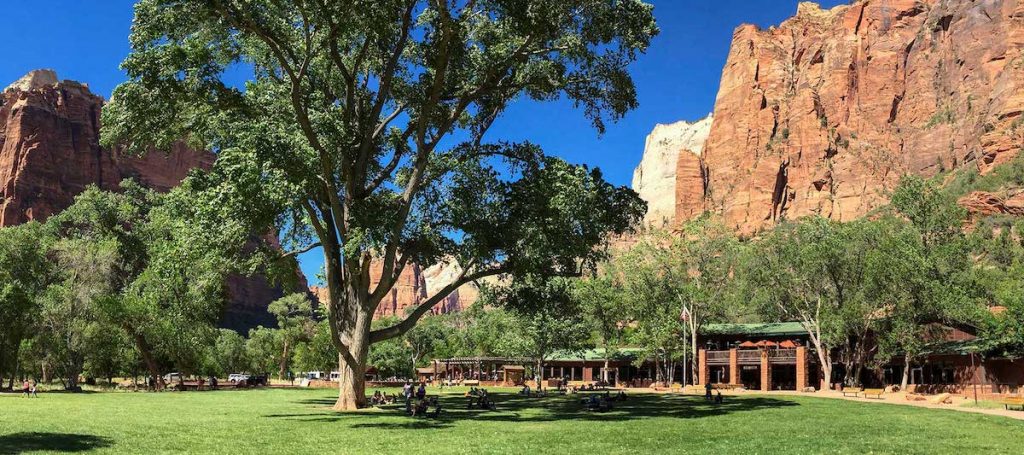
There are hotels and bed-and-breakfast operations in the nearby town of Springdale. An upscale option is a condominium at Watchman Villas, just a mile outside the park. Saint George and Cedar City also have hotels and motels.
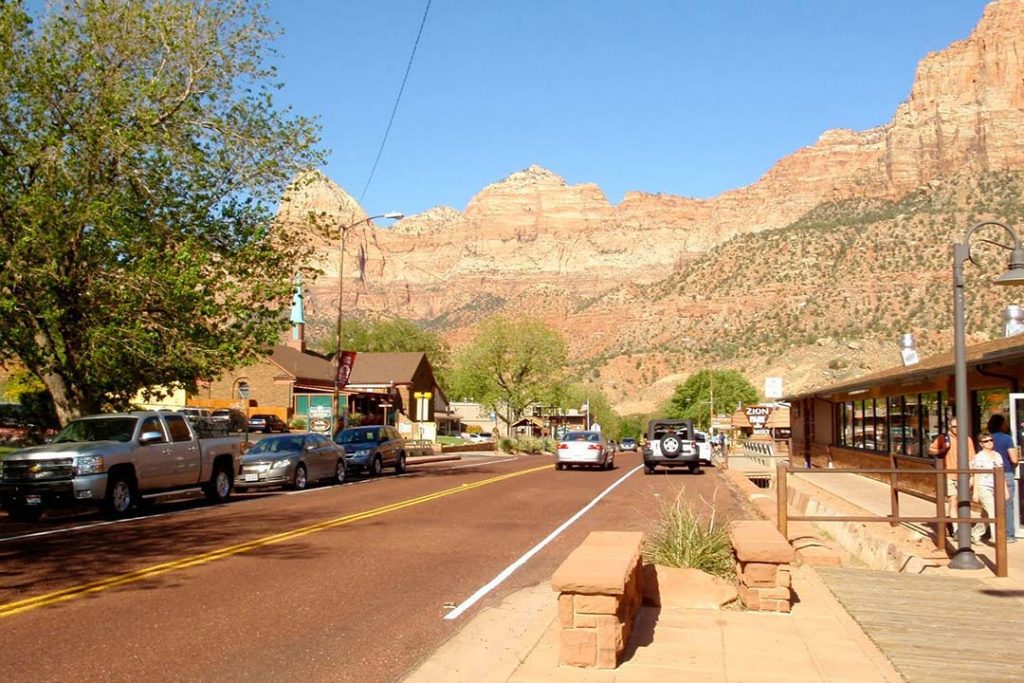
Zion Ponderosa Ranch Resort, a one-hour drive from the east entrance, features cabins, Conestoga wagon lodging, RV parking, and camping. The facility offers horseback riding, mini-golf, ziplines, swimming, Dutch-oven cooking, mountain biking, canyoneering, a shotgun range, and jeep tours.
Near the park’s west entrance is the Cliffrose Lodge, on the Virgin River. It has suites and villas, hot tubs, and beaches. The Red Rock Inn Bed and Breakfast Cottages in Springdale are less expensive.
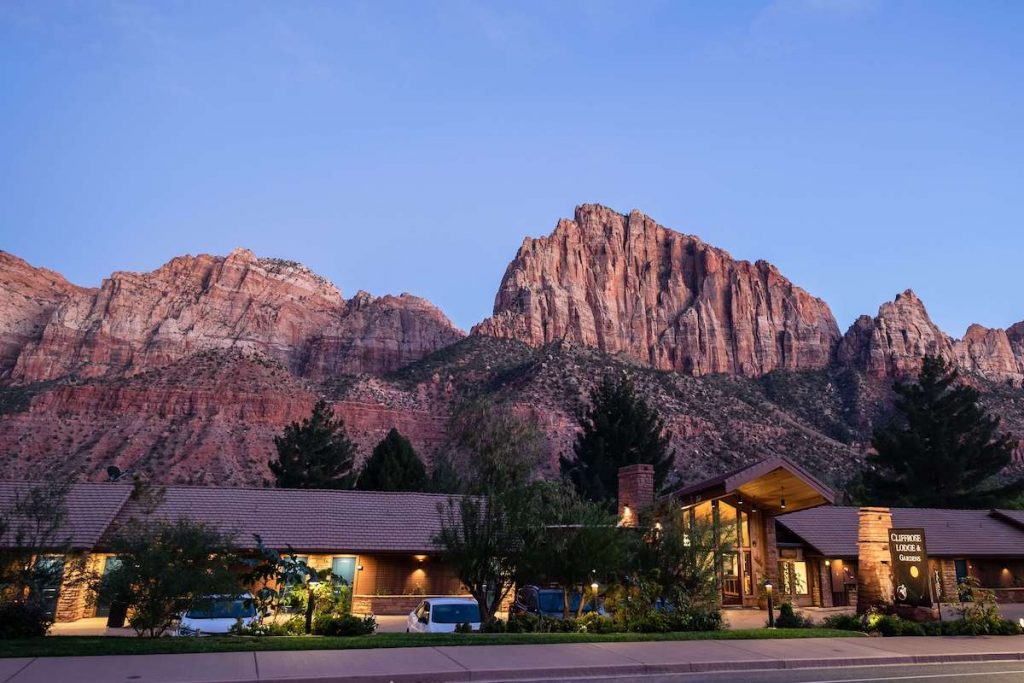
The park operates three campgrounds, which are full nearly every night from mid-March through late November. Reservations are recommended. All three sites provide flush toilets, drinking water, and trash containers. There are no showers or electrical service. Pets are allowed on leashes no longer than six feet.
Reservations are either required or recommended for some activities. Wilderness permits for overnight backpacking trips are available at visitor centers, but it is a good idea to sign up online as long as three months ahead of time.
Reservations and permits are needed for technical canyoneering trips, overnight rock-climbing bivouacs, and river trips.
Visitors also need to be prepared to pay for recreational use passes to enter the park. There are seven-day, annual, and lifetime passes. Children younger than 15 are admitted free of charge.
Getting Around Zion
Zion is in a remote area, on State Route 9. Interstate 15 intersects with highway from the north and south.
The nearest international airports are in Las Vegas, 170 miles away; and Salt Lake City, 300 miles away. Travelers can take flights from Salt Lake City to smaller airports in Saint George (49 miles from the park) or Cedar City (60 miles).
Zion has limited parking space. When designated stalls are full, visitors must leave their vehicles in Springdale and ride free shuttle buses to the park.
From there, tourists take shuttles to some of the most famous attractions along Zion Canyon Scenic Drive. Private vehicles are allowed on this main park road only from December through February. Bicyclists may ride the route at any time.
Top Things To See In Zion
The interior canyon itself is the most memorable part of a trip to Zion. No visitor ever forgets the stunning beauty of the cliffs, waterfalls, and other sights.
Angels Landing, a 1,488-foot-tall rock, is one of the park’s most recognizable sites. A difficult trail leads to the top, which affords panoramic views of the canyon.
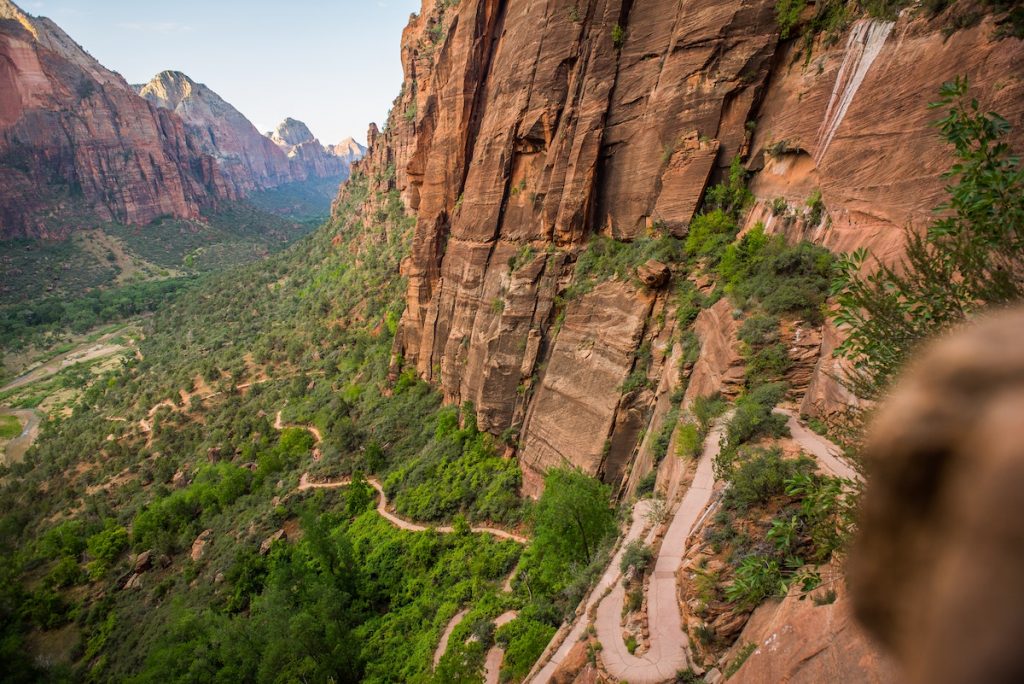
Zion Narrows is a gorge within thousand-foot walls that is just 20-30 feet across. A paved, one-mile, handicap-accessible Riverside Walk is the easiest way to see the area. Hikers can also wade in the Virgin River.
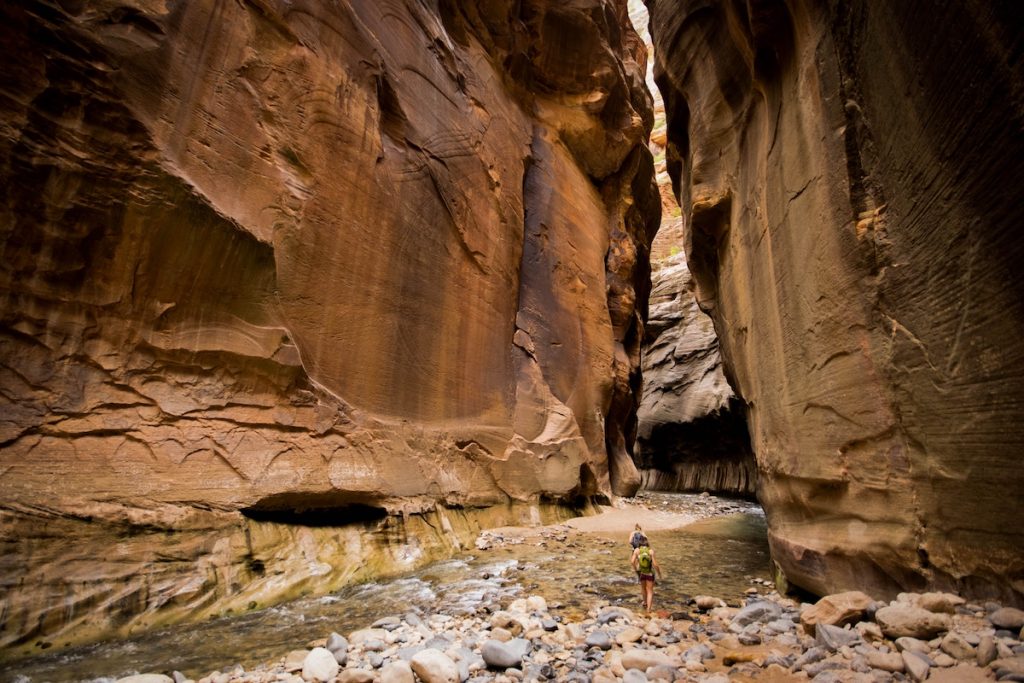
Waterfalls, hanging flower gardens, and ferns are among the delights of the Emerald Pools. Three sets of pools are along a stream, right next to Zion Lodge. Short, paved trails lead to them.

Another verdant area is Weeping Rock, where water seeps from an alcove to create waterfalls and hanging gardens. The easy, half-mile walk is one of the park’s two most popular trails.
Zion Hiking Trails
For adventurous tourists, Zion offers many things to do.
There are short, medium-length, and long hiking trails. Some, especially those entailing major elevation changes, are more difficult than others. The park’s hiking guide outlines the alternatives and rules.

The Canyon Overlook Trail, a one-mile round trip, is one of the park’s simpler walks. Guides lead people from a parking lot to a fabulous view of the main canyon. The Kolob Canyons area is home to other well-liked trails. There are trails for overnight trips in the Zion Wilderness.
Horseback riders see places that most visitors miss, such as more rock monoliths and cactus gardens. One short trail passes alongside the Virgin River. The three-hour Sandbench Trail climbs 500 feet to a scenic outlook.

Backpackers from all over the world travel to the park for its 90-plus miles of foot trails and dozens of designated backcountry campsites. This is a great way to explore some of Zion’s 124,406 acres of designated wilderness.
Bicycles are permitted on all park roads and the Pa’rus Trail. Like hikers, bicyclists enjoy opportunities to get up close and personal with nature. Zion is a destination for birdwatchers because of the 291 avian species, including rare birds like the California condor and Mexican spotted owl. There are also ravens, peregrine falcons, and hummingbirds.
Few places on Earth are better for canyoneering. This activity involves hiking, swimming, and sometimes rappelling. Zion teems with dozens of canyons, from narrow slots to wider chasms, that provide wonders around every turn. The Narrows, The Subway, and Orderville Canyon are the most-visited locations.
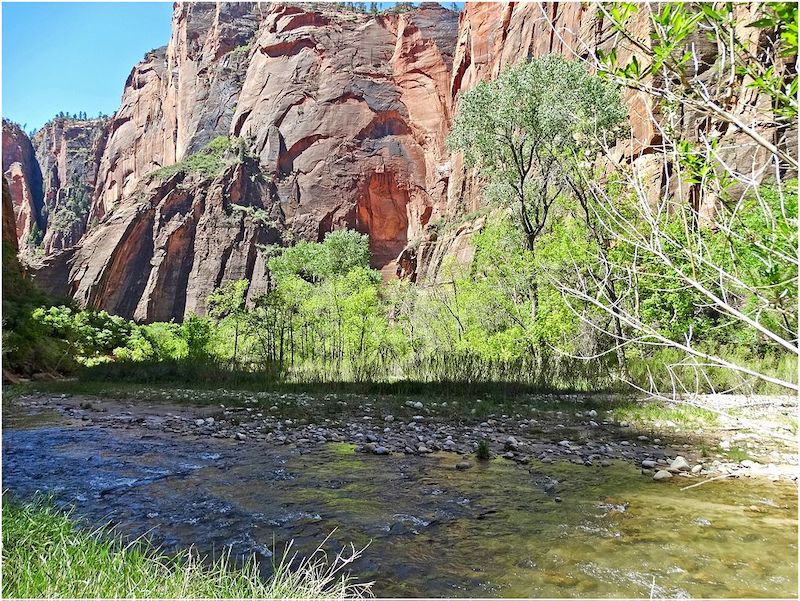
Some of the park’s stone monoliths are ideal for climbing. The 2,000-foot sandstone cliffs are famous among enthusiasts of the sport. This is an adventure reserved for experts. Others might want to try bouldering at one of two accessible sites in the main canyon.
River trips with various types of watercraft, including kayaks, are possible when rivers are high enough. Excursions range from a few hours to several days.
Rangers lead activities from mid-April to mid-October that focus on animals, plants, geology, and human history. There are walks, talks, and evening campground programs.
Activities and educational programs for children take place every day from Memorial Day to Labor Day at the Zion Nature Center. A short kids’ hike happens regularly at the Zion Human History Museum. Zion Lodge programs feature nature games, music, and storytelling.




